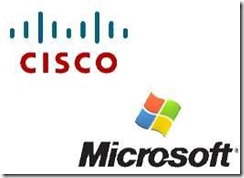Windows Server 2012 – Hyper-V Extensible Switch – Cisco Nexus 1000V
Nexus 1000V and Native Hyper-V Switch Compatibility

Supported – Use of these features is supported in a Hyper-V deployment using the Nexus 1000V switch extension
· Converged Network Architectures (CNA) – There is no particular interaction between converged NICs (e.g. UCS or HP blades) and the 1000V. If the NICs are presented to the OS
· SR-IOV - Not interoperable with the Nexus 1000V and will not shine through the 1000V to the guest, because SRIOV doesn't work with teams underneath. The Cisco VM-FEX extension will support this in the future.
Supported, but Not Recommended - While not prevented, Nexus 1000V switch extension has a built-in mechanisms which mirror these features and shouldn't be configured in two places. The Nexus 1000V features are more advanced, so you should only apply these settings in one place and use the Nexus 1000V settings when configuring these features.
· Port ACLs
· Bandwidth Management (QoS)
· DHCP Guard
· Router Guard
· VLAN tagging - While not prevented in the UI, this is disabled the VLAN handling within Windows and leave this up to the forwarding extension
Not Supported – Use of these features is not supported in a Hyper-V deployment using the Nexus 1000V switch extension
· Windows Network Virtualization
· NIC Teaming (LBFO) - The 1000V creates a team by default. The forwarding extension in the 1000V will not allow you to apply on top of a team and the 1000V should prevent you from applying a team to the underlying NIC.
o Note – Customers could still deploy one LBFO team (e.g. management network) and a separate 1000V team (VM network)
Not Supported in Beta and RC, expected in RTM
· Single-NIC design – This design is not finalized yet. The Nexus 1000V switch extension will still need two NICs for RC. (1 NIC for Nexus team - 1 NIC for host)
· VMQ – VMQ is not supported in the pre-release (Beta and RC) version of the extension, but is planned for the RTM version